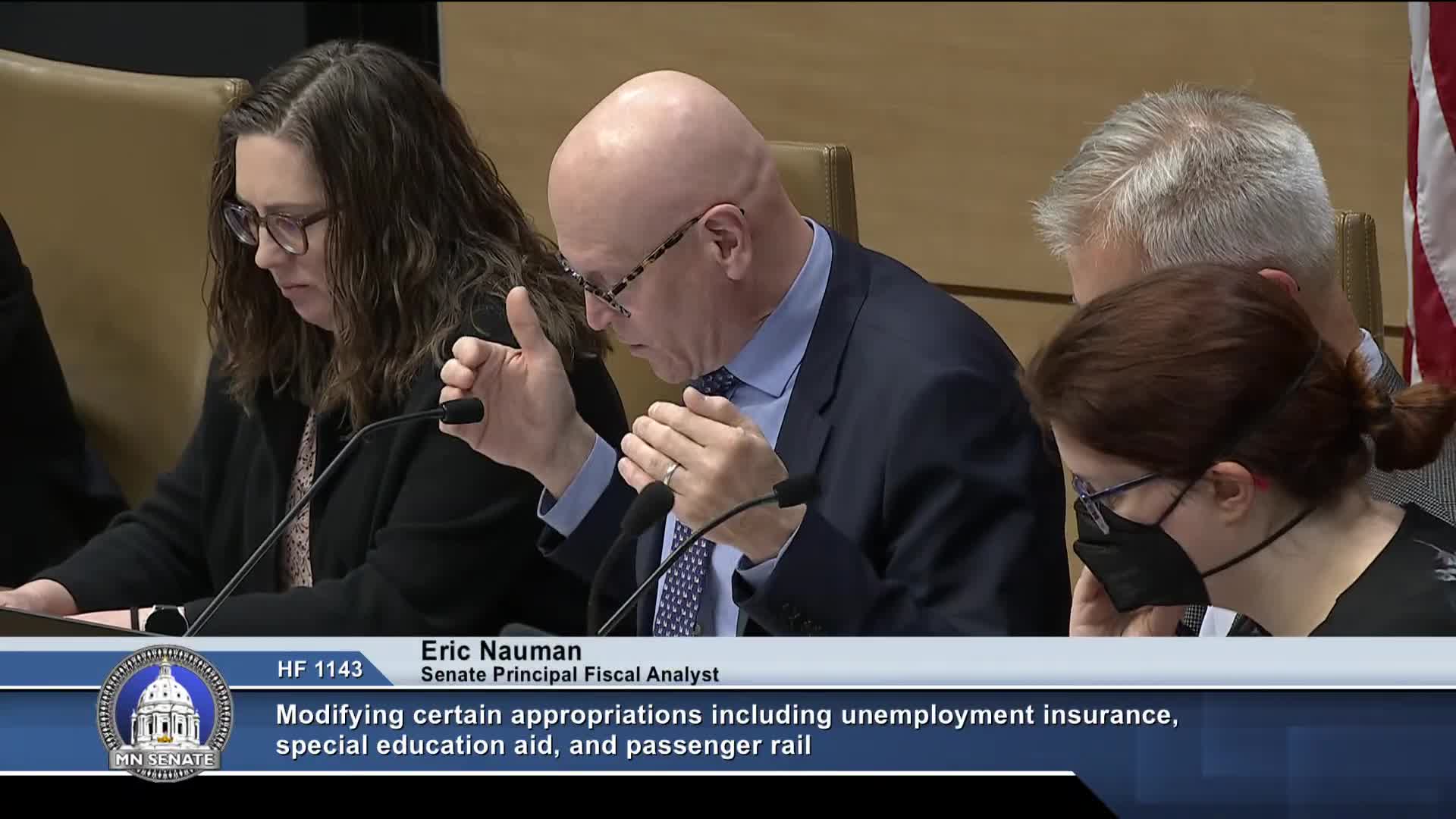Minnesota bill reallocates special education funds to summer worker expenses
May 18, 2025 | Finance, Senate, Committees, Legislative, Minnesota
This article was created by AI summarizing key points discussed. AI makes mistakes, so for full details and context, please refer to the video of the full meeting. Please report any errors so we can fix them. Report an error »

In a recent meeting of the Minnesota Senate's Committee on Finance, discussions centered around significant changes to funding for special education and its implications for various projects, including passenger rail initiatives. As the committee convened, the atmosphere was charged with the weight of financial decisions that could reshape educational funding in the state.
At the heart of the conversation was a proposed bill that allocates $100 million for expenses related to summer unemployment insurance (UI) workers. This funding shift is poised to impact how school districts manage their special education expenses. Currently, certain costs that were previously billable to special education will no longer qualify under the new parameters set forth in the bill. This change raises concerns about the potential for reduced funding for special education programs, as highlighted by Senator Dames during the meeting.
Mister Nauman, a key figure in the discussion, explained that without adjustments to the parameters governing special education, the anticipated expenses would decrease. This could inadvertently lead to an excess of funds being redirected to the passenger rail project, potentially canceling more rail initiatives than necessary. The complexity of these financial interactions was acknowledged, with Nauman emphasizing the need for clarity in understanding how these changes would affect both education and transportation funding.
Further elaboration came from Miss Hofer, who clarified that the reduced expenses in special education primarily relate to the reimbursable costs associated with hourly workers, such as special education paraprofessionals. As school districts navigate these changes, they will need to reassess their budgeting strategies to accommodate the new funding landscape.
As the committee continues to deliberate on these issues, the implications of the proposed bill remain significant. The decisions made in this meeting could not only alter the financial framework for special education but also influence broader infrastructure projects across Minnesota. The outcome of these discussions will be closely watched by educators, parents, and community members alike, all of whom have a vested interest in the future of education and transportation in the state.
At the heart of the conversation was a proposed bill that allocates $100 million for expenses related to summer unemployment insurance (UI) workers. This funding shift is poised to impact how school districts manage their special education expenses. Currently, certain costs that were previously billable to special education will no longer qualify under the new parameters set forth in the bill. This change raises concerns about the potential for reduced funding for special education programs, as highlighted by Senator Dames during the meeting.
Mister Nauman, a key figure in the discussion, explained that without adjustments to the parameters governing special education, the anticipated expenses would decrease. This could inadvertently lead to an excess of funds being redirected to the passenger rail project, potentially canceling more rail initiatives than necessary. The complexity of these financial interactions was acknowledged, with Nauman emphasizing the need for clarity in understanding how these changes would affect both education and transportation funding.
Further elaboration came from Miss Hofer, who clarified that the reduced expenses in special education primarily relate to the reimbursable costs associated with hourly workers, such as special education paraprofessionals. As school districts navigate these changes, they will need to reassess their budgeting strategies to accommodate the new funding landscape.
As the committee continues to deliberate on these issues, the implications of the proposed bill remain significant. The decisions made in this meeting could not only alter the financial framework for special education but also influence broader infrastructure projects across Minnesota. The outcome of these discussions will be closely watched by educators, parents, and community members alike, all of whom have a vested interest in the future of education and transportation in the state.
View full meeting
This article is based on a recent meeting—watch the full video and explore the complete transcript for deeper insights into the discussion.
View full meeting
